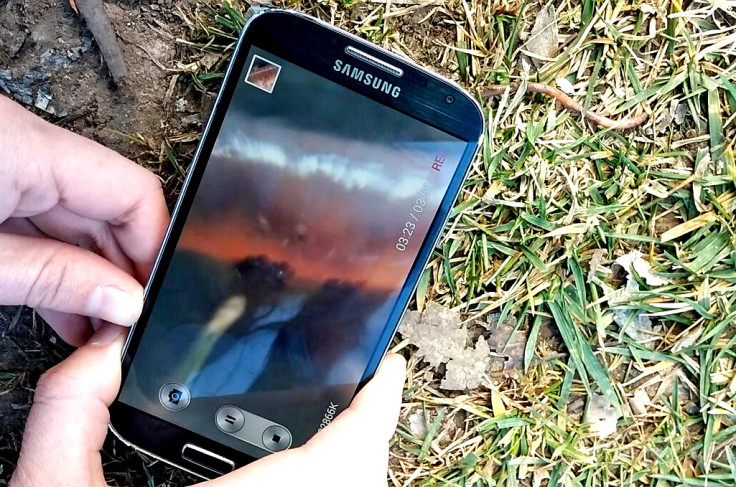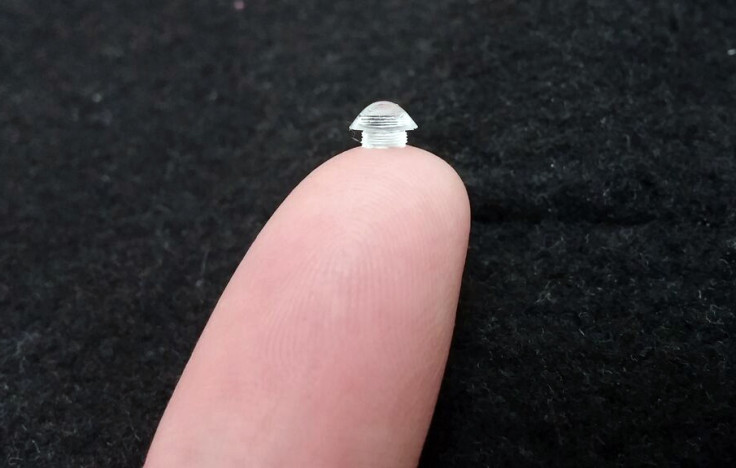DIY £1 microscopes now possible using a smartphone, an oven and a 3D printed lens maker

Students from Australian National University (ANU) have developed a DIY lens maker that enables anyone to turn their smartphone into a £1 ($1.58, AUD$2.11) microscope that can detect skin diseases and magnify objects almost as well as a £300 clinical microscope.

In April 2014, ANU researcher Dr Steve Lee announced that he had succeeded in inventing a low-cost lens made from several drops of a common gel-like silicone polymer called polydimethylsiloxane (PDMS) placed on a microscope glass slide and then baked in a conventional oven at 70 degrees Celsius.
When the lens was attached to a Nexus 4 smartphone together with two LEDs to angle the light and watch battery, Lee and his team were able to diagnose skin diseases like melanoma.
The researchers estimated that as long as a person had a smartphone already, the cost of creating the microscope would be a grand total of £1 each, and that this could be useful in rural areas and schools where access to expensive microscope technology was limited.
Make multiple microscope lenses by yourself

Fast forward 15 months and now ANU engineering students Kenny Cen, Rachel Watkins and David Wright, who participated in the initial research, have created a 3D printed Microscope Lens Maker that enables anyone to make the low-cost microscope lenses by themselves.
The students are now seeking backing for their lens maker on Kickstarter, and they say that the new improved lenses are able to offer a magnification power that ranges from 15 times to 180 times, with a resolution of 10 microns (millionths of a metre).

"There have been a lot of different types of lenses made that can turn smartphones into cheap microscopes. The Lens Maker is unique because nothing on the current market allows a common consumer to make these lenses. It revolutionise the field of optics, where traditionally you purchase one lens with one magnification," Cen told IBTimes UK.
"The Lens Maker is also reusable, which means you only need one Lens Maker to make hundreds of lenses."
In order to receive the lens maker and the materials needed to make multiple lenses, interested backers need to pledge at least AUD$20. Once the Kickstarter campaign has ended, the students intend to sell the Microscope Lens Maker at AUD$25 each.
Invention targeted at education as well as developing countries
"Our focus is on education – teaching schoolchildren the fundamentals of chemistry, physics and optics through the Lens Making process. We have a vision to reinvent how science is taught at schools by integrating modern technology to outdated science experiments," he said.
The low-cost lens is suitable for use in laboratories and hospitals, but its price makes it ideal for education. The student say they are in the process of introducing the Lens Maker as part of the Australian High School Science curriculum, and have also been invited to run lens making workshops at the 2015 National Science Week in August.
The Kickstarter campaign currently has 119 backers pledging AUD$6,137 out of the AUD$15,000 goal, and there are 17 days left to go.
For further reading, the initial research on the low-cost lens was published in a study entitled, "Fabricating low cost and high performance elastomer lenses using hanging droplets" in open-access journal Biomedical Optics Express in April 2014.
The paper detailing how the students created the device to easily replicate multiple lenses, entitled "Integrated elastic microscope device" has been published in Proceedings of SPIE journal.
© Copyright IBTimes 2025. All rights reserved.






















